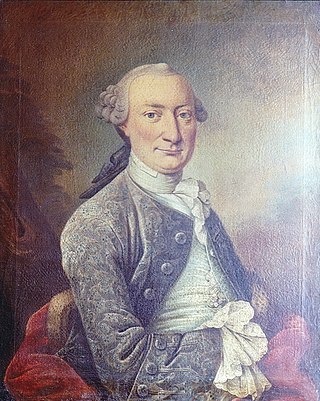Saint Croix is an island in the Caribbean Sea, and a county and constituent district of the United States Virgin Islands (USVI), an unincorporated territory of the United States.
Allandale is an uninhabited settlement on the island of Saint Croix in the United States Virgin Islands.
Altona is a settlement on the island of Saint Croix in the United States Virgin Islands. It is an eastern suburb of Christiansted.
Annaberg is a settlement on the island of Saint Croix in the United States Virgin Islands.
Bellevue is a settlement on the island of Saint Croix in the United States Virgin Islands. It is a western suburb of Christiansted. The geographic area is 140 acres of which the majority are forested. Of the 140 acres half 70 acres belong to the Bond family which since 1956 has owned a federally registered Caribbean Mahogany Reforestation Tree Farm. The property adjoins the Estate Thomas research property belonging to the International Institute of Tropical Forestry of the United States Forest Service.
Belvedere is a settlement on the north coast of the island of Saint Croix in the United States Virgin Islands. Belvedere lies along North Shore Road or Route 80.

Bethlehem Old Work is a settlement on the island of Saint Croix in the United States Virgin Islands. It was set-up as one of the first plantations in the 1730s, and operated as the last sugar plantation on the island until the Bethlehem Central Factory closed in 1966.

Sugar production in the Danish West Indies, now the United States Virgin Islands, was an important part of the economy of the islands for over two hundred years. Long before the islands became part of the United States in 1917, the islands, in particular the island of Saint Croix, was exploited by the Danish from the early 18th century, and by 1800 over 30,000 acres were under cultivation, earning Saint Croix a reputation as the "Garden of the West Indies". Since the closing of the last sugar factory on Saint Croix in 1966, the industry has become only a memory.
Grove Place is a settlement on the island of Saint Croix in the United States Virgin Islands. It was added to the National Register of Historic Places in 1978.
Hermitage, Saint Croix, also known as Estate Hermitage, is a settlement on the island of Saint Croix in the United States Virgin Islands. In the historical system of quarters and estates used there, it is estate 5 in St. Croix's King's Quarter. It has an area of 1.478 square kilometres (0.571 sq mi) and had a population of 14 as of 2020.
Hogensborg is a settlement on the island of Saint Croix in the United States Virgin Islands.
Jealousy is a settlement on the island of Saint Croix in the United States Virgin Islands.
Mount Pleasant, Saint Croix is a settlement on the island of Saint Croix in the United States Virgin Islands.
Peters Rest is a settlement on the island of Saint Croix in the United States Virgin Islands. The settlement originally formed around a sugar plantation.
Upper Love is a settlement on the island of Saint Croix in the United States Virgin Islands.
Waldberggaard is a settlement on the island of Saint Croix in the United States Virgin Islands.

Whim is a historic sugar plantation located in Southwest subdistrict about 1.7 miles (2.7 km) southeast of Frederiksted on Centerline Road on Saint Croix, U.S. Virgin Islands. It was listed on the National Register of Historic Places in 1976. The listing included three contributing buildings, one contributing site, and two contributing structures, on 10 acres (4.0 ha).
Estate Mount Victory, near Frederiksted on Saint Croix in the U.S. Virgin Islands, is a sugar plantations listed on the National Register of Historic Places in 1978. The listing included five contributing sites on 7 acres (2.8 ha).

Jens Michelsen Beck was a Danish surveyor, cartographer, landowner and planter. On the island of Saint Croix in the Danish West Indies, he owned the Beck's Grove plantation. Beck later returned to Denmark, settling on Gentoftegård north of Copenhagen. His daughter Christiane was married to Ove Malling.

Estate Rust-Op-Twist, situated near Christiansted on the island of Saint Croix in the U.S. Virgin Islands, is a former colonial sugar plantation. It was a hub of sugar production from 1755 until the early 1900s, and is currently listed on the US National Register of Historic Places.






